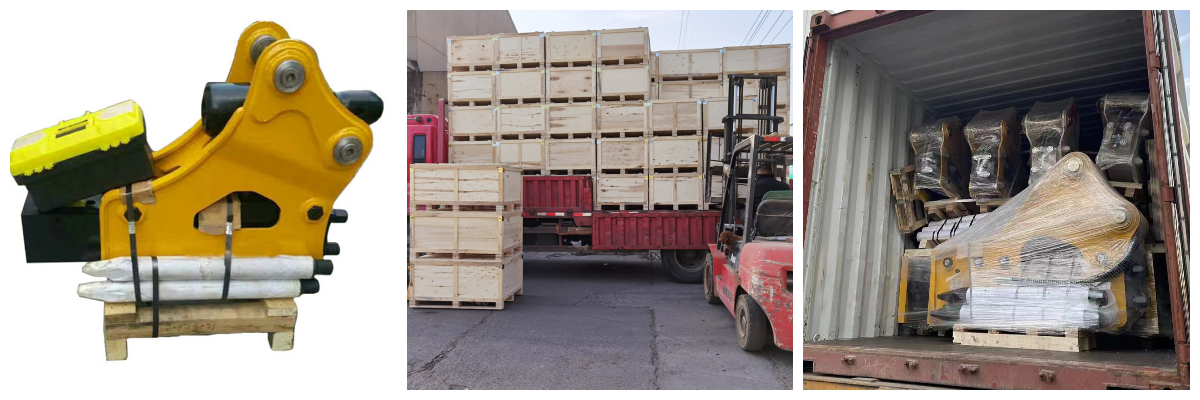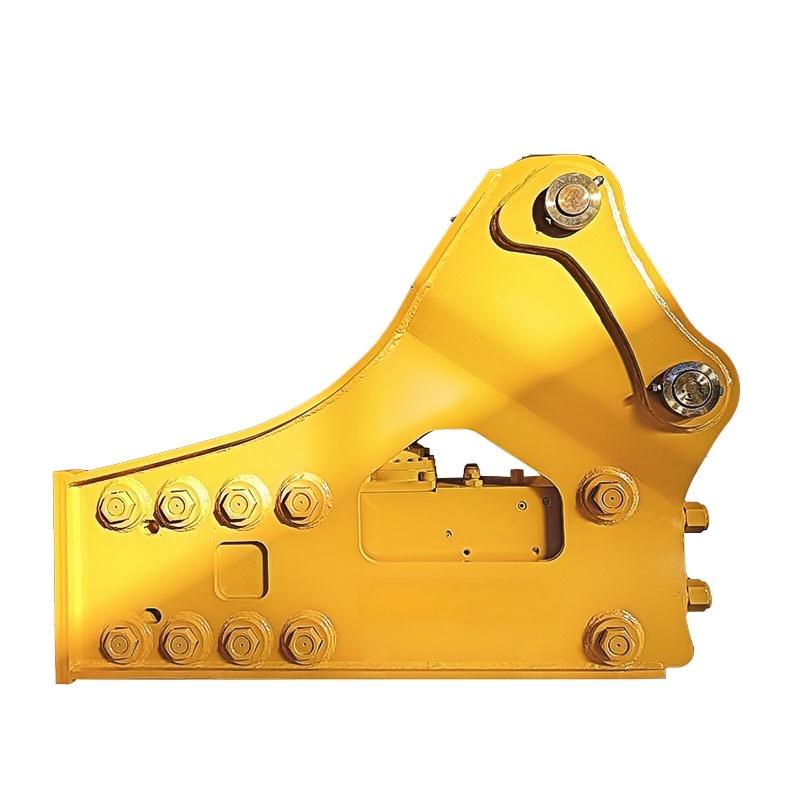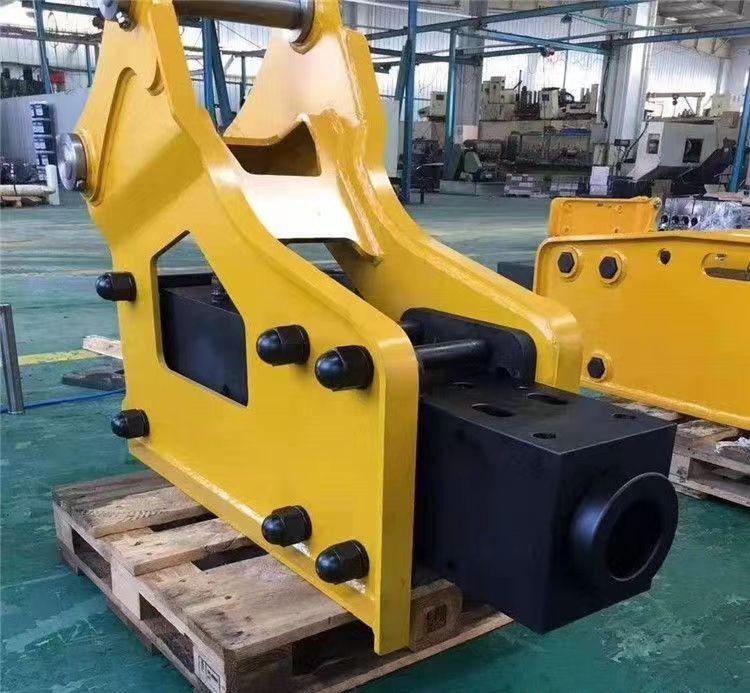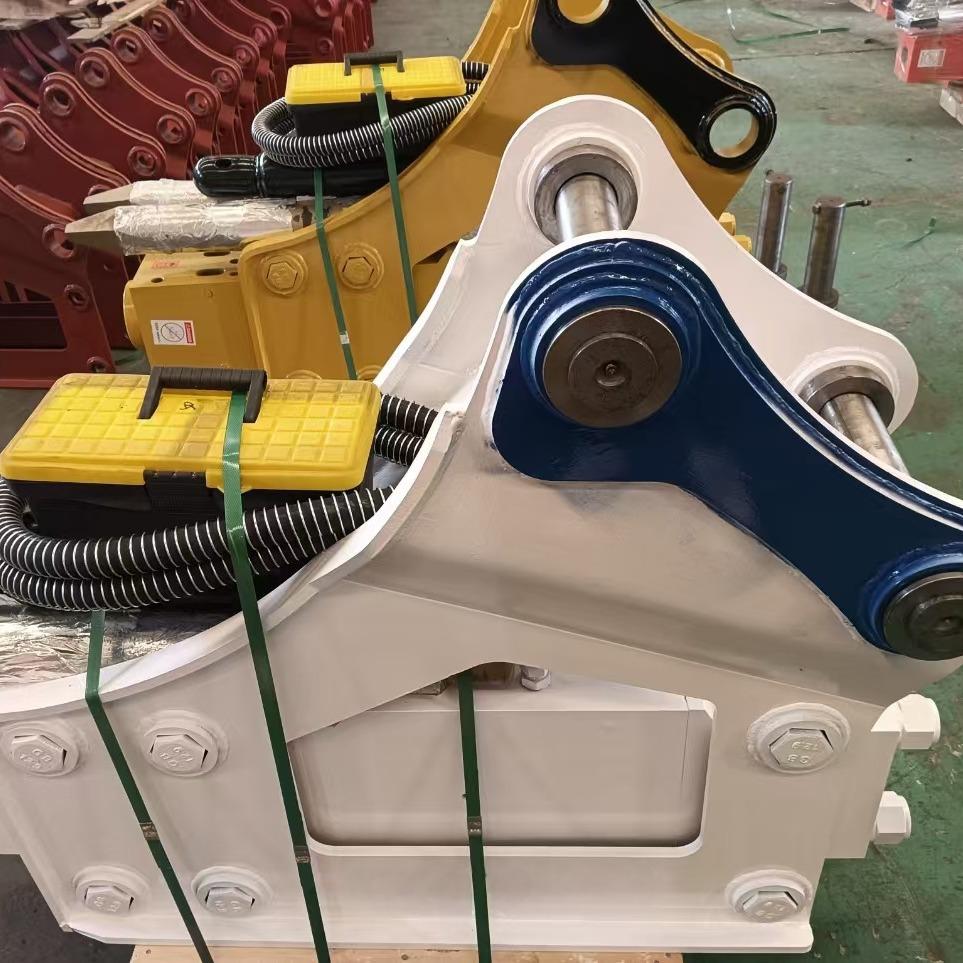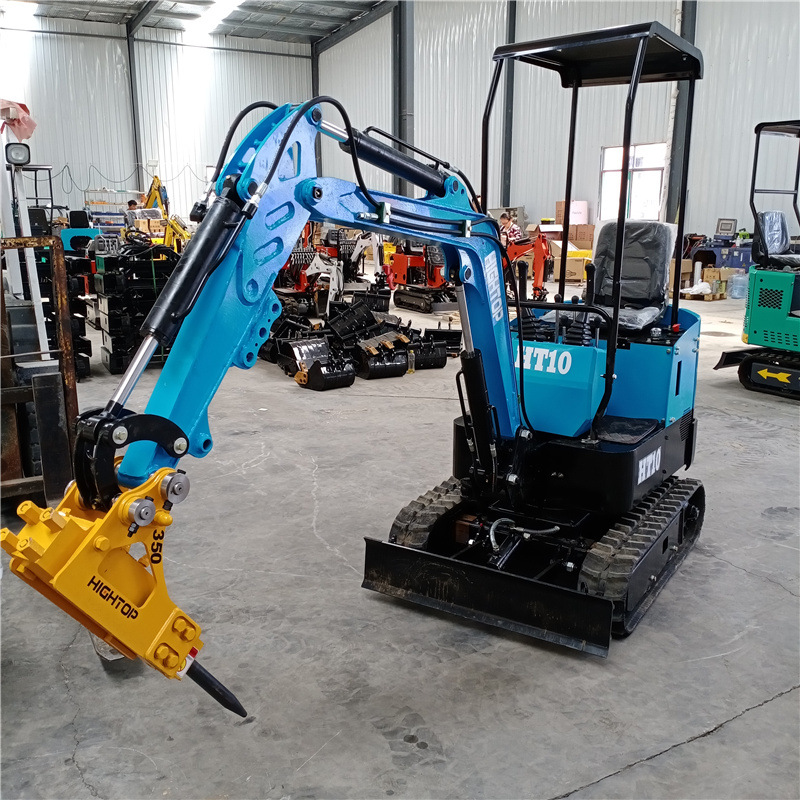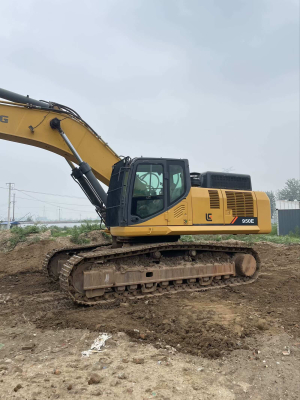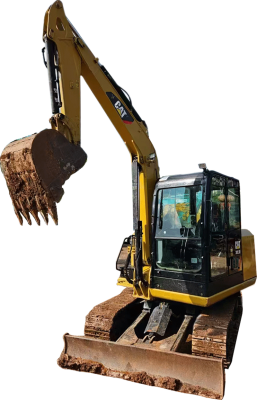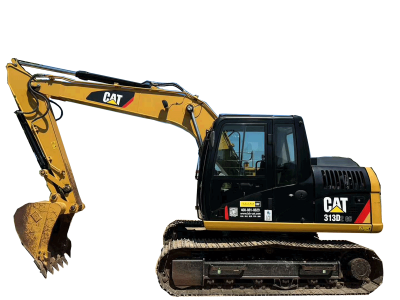LXS1400 Side Type Hydraulic Concrete Breaker Rock Hammer
Advantages of Hydraulic Breakers
High Efficiency: Capable of breaking hard materials (e.g., concrete, rock) quickly, improving construction productivity.
Powerful Impact Force: Delivers strong impact energy to handle tough demolition or excavation tasks.
Precision Control: Allows operators to adjust impact frequency and force for different applications, reducing collateral damage.
Durability: Built with robust materials to withstand heavy-duty use and harsh working environments.
Versatility: Compatible with various carriers (e.g., excavators), suitable for multiple industries like construction, mining, and road repair.
Energy Efficiency: Relies on hydraulic power, which is often more energy-efficient than other breaking methods.
Reduced Vibration & Noise: Modern designs minimize vibration and noise compared to older mechanical breakers, enhancing operator comfort and compliance with environmental regulations.
Applications of Hydraulic Breakers
1. Construction Industry
Demolition of concrete structures (buildings, bridges, roads).
Breaking up old pavements for road repair or reconstruction.
Excavation for foundations, pipelines, or utilities.
2. Mining & Quarrying
Breaking hard rock formations for mineral extraction.
Fragmenting large boulders into smaller, manageable sizes.
Clearing overburden or preparing sites for blasting.
3. Civil Engineering
Removing reinforced concrete during infrastructure upgrades.
Creating channels for drainage systems or underground cables.
Breaking through rocky terrain for tunnel or trench excavation.
4. Industrial Maintenance
Removing worn-out machinery foundations or concrete bases.
Breaking up solidified materials (e.g., slag, concrete residues) in industrial facilities.
5. Demolition & Recycling
Selective demolition to salvage reusable materials (e.g., steel from concrete).
Processing concrete waste into recyclable aggregates.
6. Agriculture & Forestry
Breaking up compacted soil or rocky ground for planting.
Removing tree stumps or large roots during land clearing.
7. Marine Engineering
Breaking up underwater concrete structures (e.g., piers, docks).
Excavating seabeds for marine pipelines or foundations.
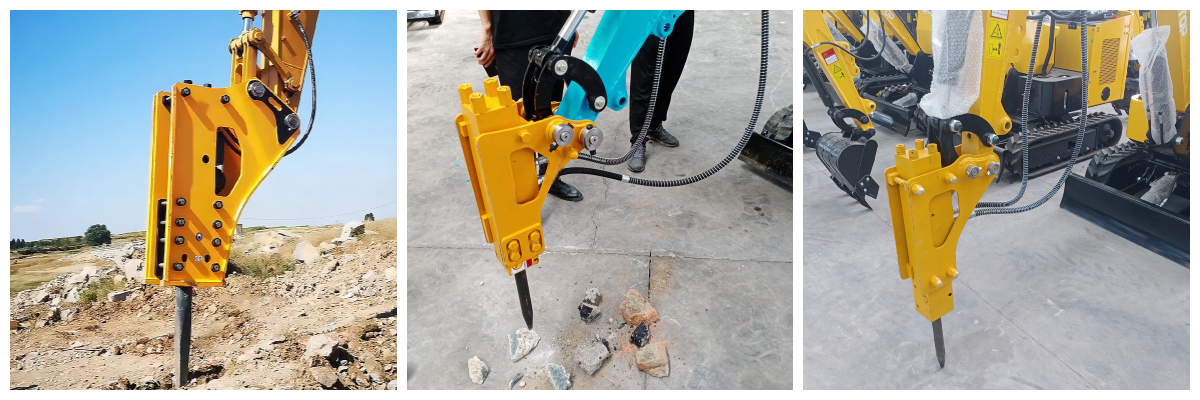
Technical Specifications
The data is for reference only, and the specific product data is subject to the actual product.

OEM Service
Our engineering team can provide tailored designs to meet specific project requirements.
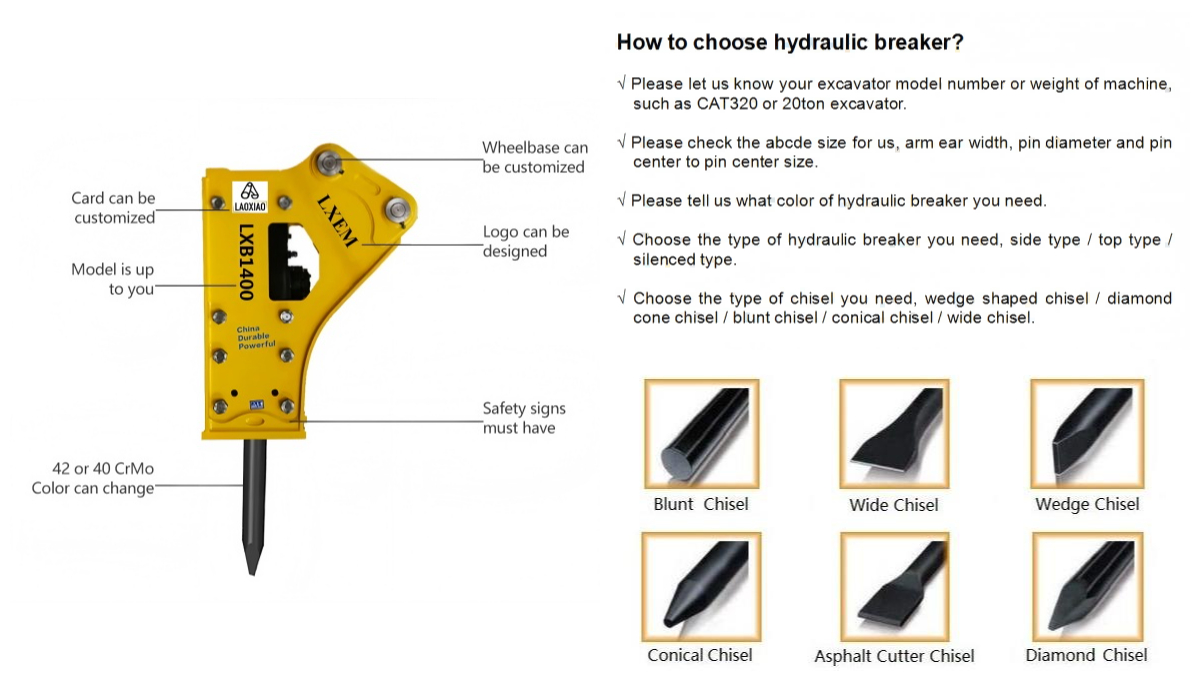
Packing & Delivery
